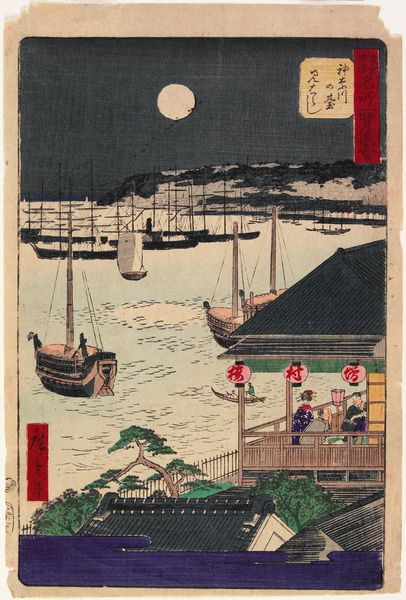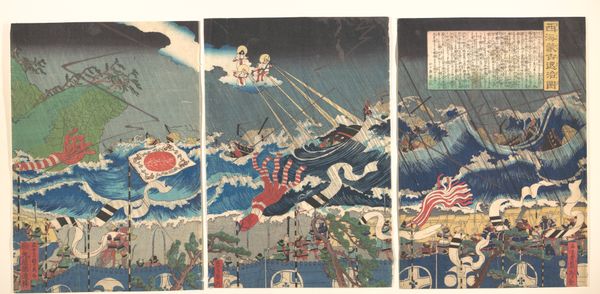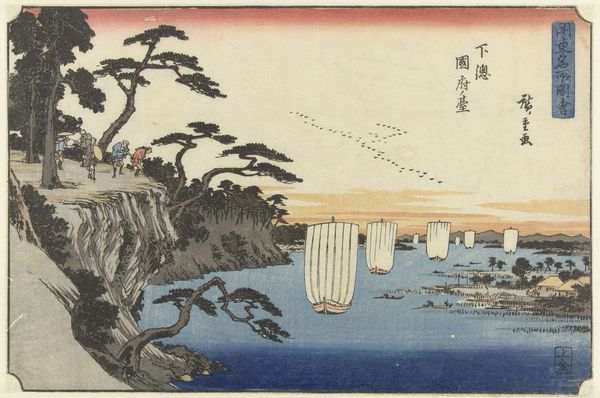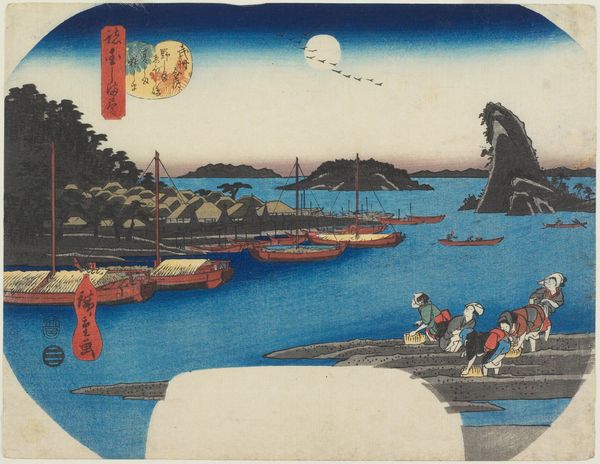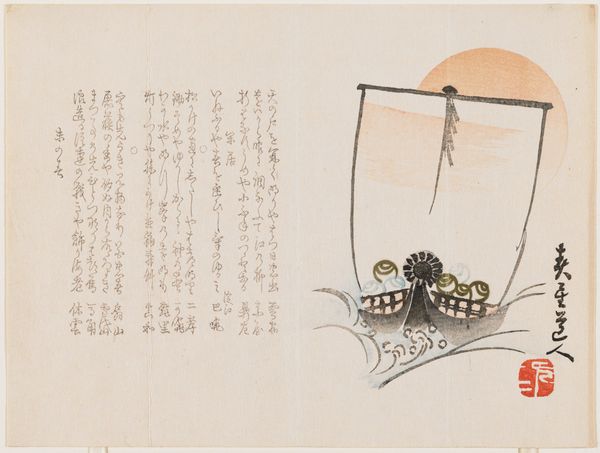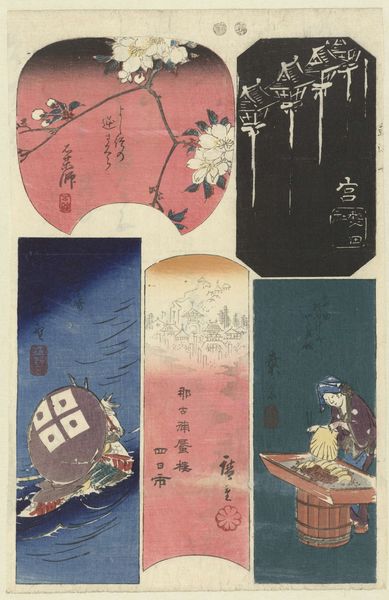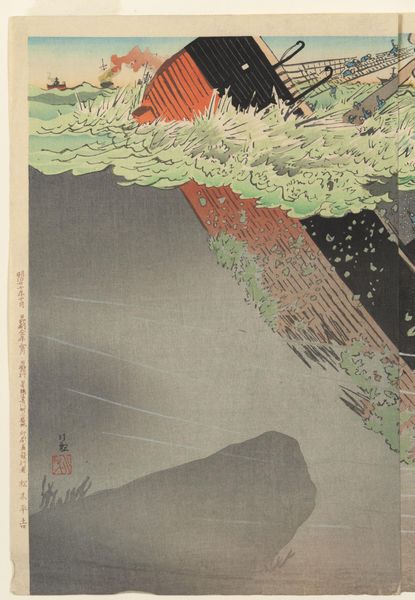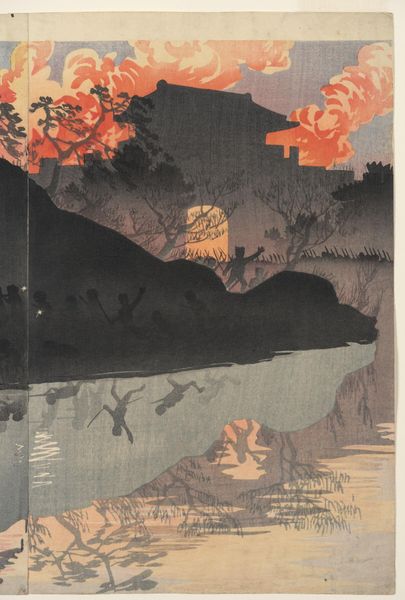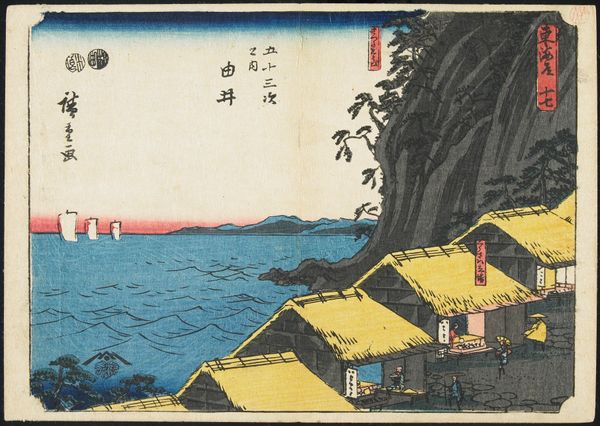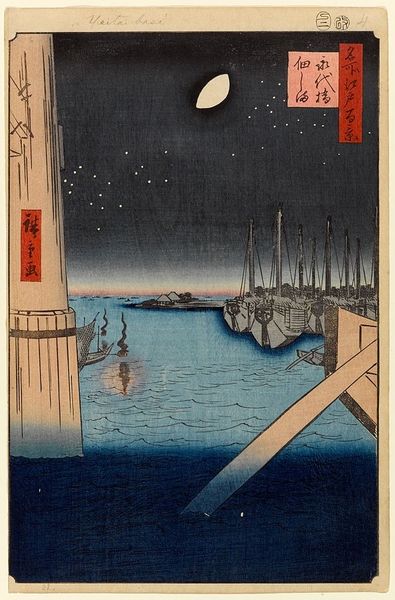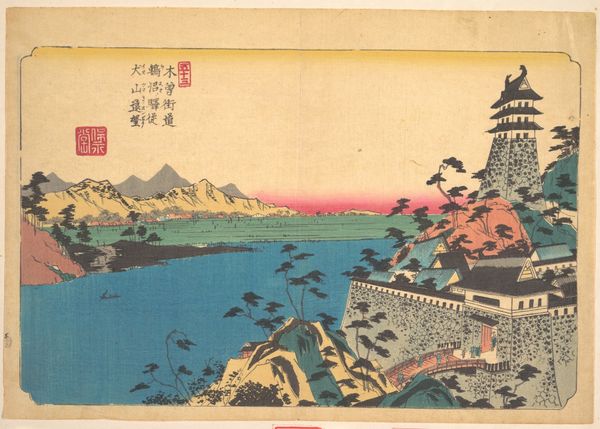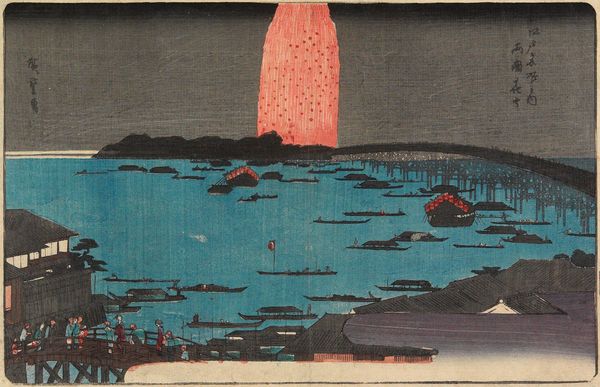
The Naval Battle of Pungdo in Korea (Chosen Hoto kaisen no zu) 1894
0:00
0:00
Copyright: Public Domain
Editor: Kobayashi Kiyochika’s "The Naval Battle of Pungdo in Korea," created in 1894, portrays a dramatic naval scene. The fiery explosion on the ship contrasts sharply with the serene night sky, and I'm struck by how this print immortalizes such a destructive moment. As an expert, how do you interpret this historical work, and what makes it culturally significant? Curator: This print, rendered through the Ukiyo-e tradition, serves as a fascinating, yet complex, example of Japanese war propaganda. It depicts the Battle of Pungdo, the opening naval engagement of the First Sino-Japanese War. Notice how Kiyochika presents a scene of decisive Japanese victory. Editor: So, it’s less about objective reporting and more about shaping public opinion? Curator: Precisely. The romanticism of the fiery explosion, juxtaposed against the quiet moonlit sea, evokes a powerful emotional response. Kiyochika’s role as a government propagandist needs to be addressed when assessing these images and its influence. He shaped Japanese perception by omitting the realities of conflict and underscoring Japan's modernizing military prowess. What kind of viewer do you imagine being presented with this piece, originally? Editor: Someone back in Japan, during the war, feeling confident about the military's strength. They wouldn't be getting the full picture of the brutality of war, though, just this heroic narrative. I guess it challenges how we view war art; not always for truth, sometimes for national pride. Curator: It prompts us to consider how conflict and victory are translated into artistic symbols that sway opinion. So war art must be seen not just in terms of documenting an event but more deeply, for shaping its reception and impact. It’s a reminder that art serves within historical and political contexts, impacting how history itself is perceived. Editor: That's fascinating. Thank you! I'll certainly remember this when looking at other historical artworks.
Comments
No comments
Be the first to comment and join the conversation on the ultimate creative platform.
